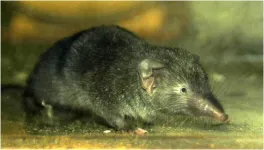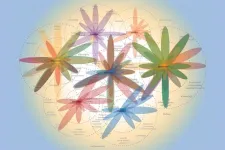A new publication from Opto-Electronic Science; DOI 10.29026/oes.2023.230019 overviews optical trapping of optical nanoparticles.
This article reviews the fundamentals and applications of optically trapped optical nanoparticles. Optical nanoparticles are nowadays one of the key elements of photonics. They do not only allow optical imaging of a plethora of systems (from cells to microelectronics), but also behave as highly sensitive remote sensors. In recent years, it has been demonstrated the success of optical tweezers in isolating and manipulating individual optical nanoparticles. This has opened the door to high resolution single particle scanning and sensing. In this quickly growing field, it is now necessary to sum up what has been achieved so far to identify the appropriate system and experimental set-up required for each application.
The most relevant results in the field of optical trapping of individual optical nanoparticles are summarized by this article. According to different materials and their optical properties, the optical nanoparticles are classified into five families: plasmonic nanoparticles, lanthanide-doped nanoparticles, polymeric nanoparticles, semiconductor nanoparticles, and nanodiamonds. For each case, the main advances and applications have been described.
Plasmonic nanoparticles have larger polarizability and high light-to-heat conversion efficiency, which require critical selection of trapping wavelength for them. The typical applications based on the luminescence properties of the optically trapped plasmonic nanoparticles are the study of particle-particle interaction and temperature sensing. This research is accomplished by analyzing the radiation absorbed, scattered, or emitted by nanoparticles.
Lanthanide-doped nanoparticles have narrow emission bands, long fluorescence lifetimes, and temperature-sensitive emission intensity. This review summarizes the reported cell temperature sensing achieved by the single optically trapped lanthanide-doped nanoparticles. The structural properties of the host of lanthanide-doped nanoparticles allow these particles to rotate. For a fixed laser power, the rotation velocity depends on the medium viscosity. Studies have shown that this property can be used to measure intracellular viscosity. Additionally, adequate surface functionalization of lanthanide-doped nanoparticles enables their use in chemical sensing.
Incorporation of dyes into the polymeric nanoparticles makes them luminescent and easy to track within the optical trap. This review summarizes the investigation of single nanoparticle dynamics and characterizations of biological samples by exploiting the ability to track particle luminescence. It not only facilitates a more thorough comprehension of optical and mechanical interaction between trapping laser and optical particles, but also points out the great potential of combining optical trapping with fluorescence or scanning microscopy.
Semiconductor nanoparticles have recently gained great attention thanks to their special photoluminescence properties such as tunable emission, lower susceptibility to photobleaching, high quantum yields, and chemical stability. In this review, the authors summarize the research on using optical tweezers to study and improve the luminescence properties of single semiconductor nanoparticles. They also summarize the research on the use of semiconductor particles as localized excitation sources for cellular imaging.
The fluorescence of nanodiamonds is caused by point-defects in the diamond structure, known as color centers. Bibliographic research reveals the limited number of reports on optical trapping of nanodiamonds. The first report on the topic revealed that a single nanodiamond can be used as magnetic field sensor. Later, an optically trapped nanodiamond was also shown to work as a cellular thermometer.
This review article reveals how the combination of optical trapping and colloidal optical nanoparticles can be used for diverse applications. Despite the great potential of optical tweezers for single nanoparticle studies, this field is still in its infancy. Most of the works focus on applications rather than on filling the gaps of knowledge. There are some issues still open. The review concludes the challenges faced by the optical trapping of nanoparticles, including the lack of a precise formula that describes the optical forces, uncertain spatial resolution, the possible presence of sensing bias, etc. This review is expected to promote the continuous enrichment and development of research on principles, techniques, equipment, and applications in this field.
# # # # # #
The Nanomaterials for Bioimaging Group (nanoBIG), formerly known as Fluorescence Imaging Group (FIG), is a multidisciplinary research group where 19 researchers belonging to the Departments of Physiology, Biology, Materials Physics, and Applied Physics from the Universidad Autónoma de Madrid work together.
The main objective of NanoBIG is the application of luminescent nanomaterials as novel solutions for current problems in biomedicine. This objective implies the simultaneous development of different research lines including new materials research and characterization, implementation of new microscopy and imaging techniques, and the design and development of small animal models to test the potential application of both the materials and the developed techniques.
NanoBIG activities are not focused on the study of a single system, but they aim to cover from the study of biosystems to the basic characterization of inorganic materials. NanoBIG also belongs to the "Ramon y Cajal" Institute for Biosanitary Research (IRYCIS).
# # # # # #
Opto-Electronic Science (OES) is a peer-reviewed, open access, interdisciplinary and international journal published by The Institute of Optics and Electronics, Chinese Academy of Sciences as a sister journal of Opto-Electronic Advances (OEA, IF=9.682). OES is dedicated to providing a professional platform to promote academic exchange and accelerate innovation. OES publishes articles, reviews, and letters of the fundamental breakthroughs in basic science of optics and optoelectronics.
# # # # # #
More information: https://www.oejournal.org/oes
Editorial Board: https://www.oejournal.org/oes/editorialboard/list
OES is available on OE journals (https://www.oejournal.org/oes/archive)
Submission of OES may be made using ScholarOne (https://mc03.manuscriptcentral.com/oes)
CN 51-1800/O4
ISSN 2097-0382
Contact Us: oes@ioe.ac.cn
Twitter: @OptoElectronAdv (https://twitter.com/OptoElectronAdv?lang=en)
WeChat: OE_Journal
Zhang FC, Camarero P, Haro-González P, Labrador-Páez L, Jaque D. Optical trapping of optical nanoparticles: Fundamentals and applications. Opto-Electron Sci 2, 230019 (2023). doi: 10.29026/oes.2023.230019
END








